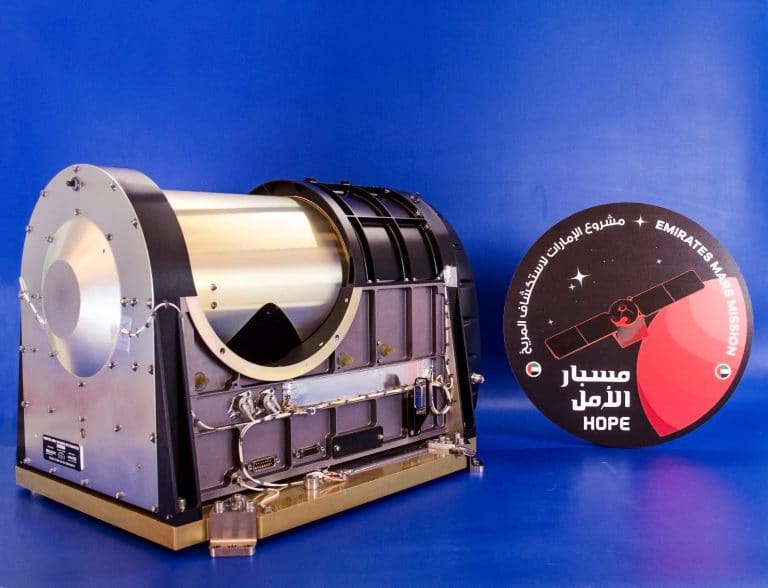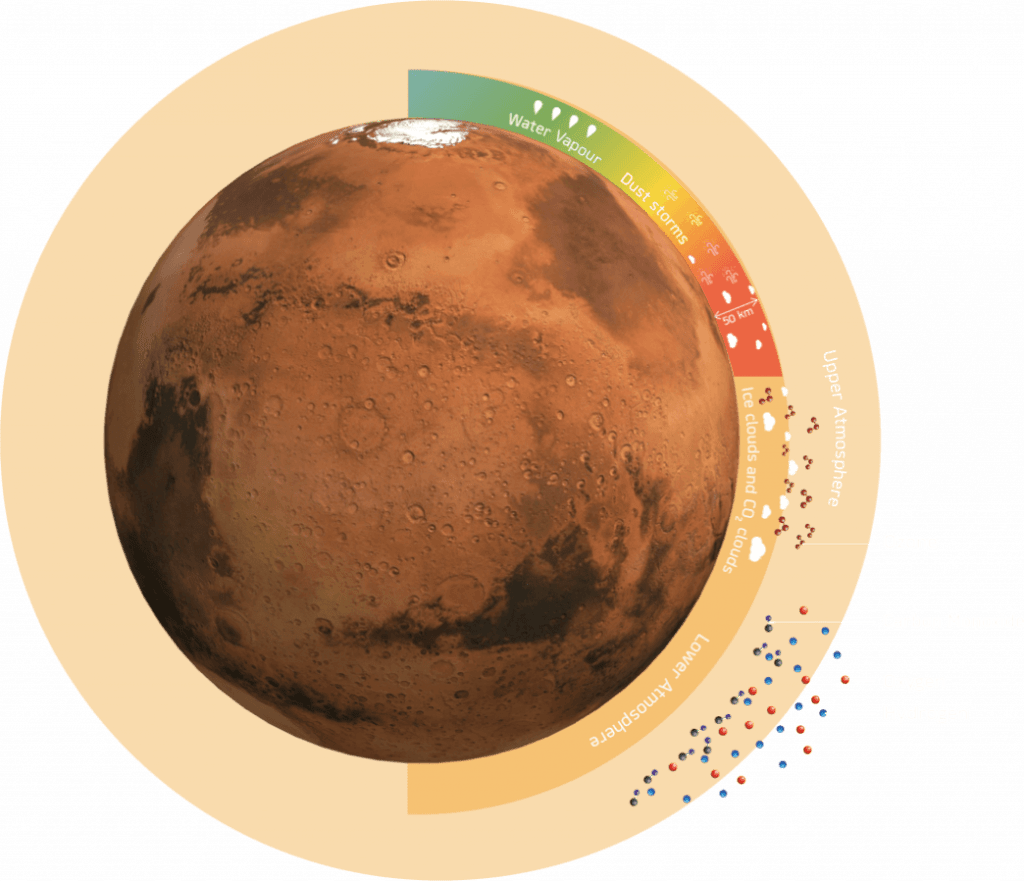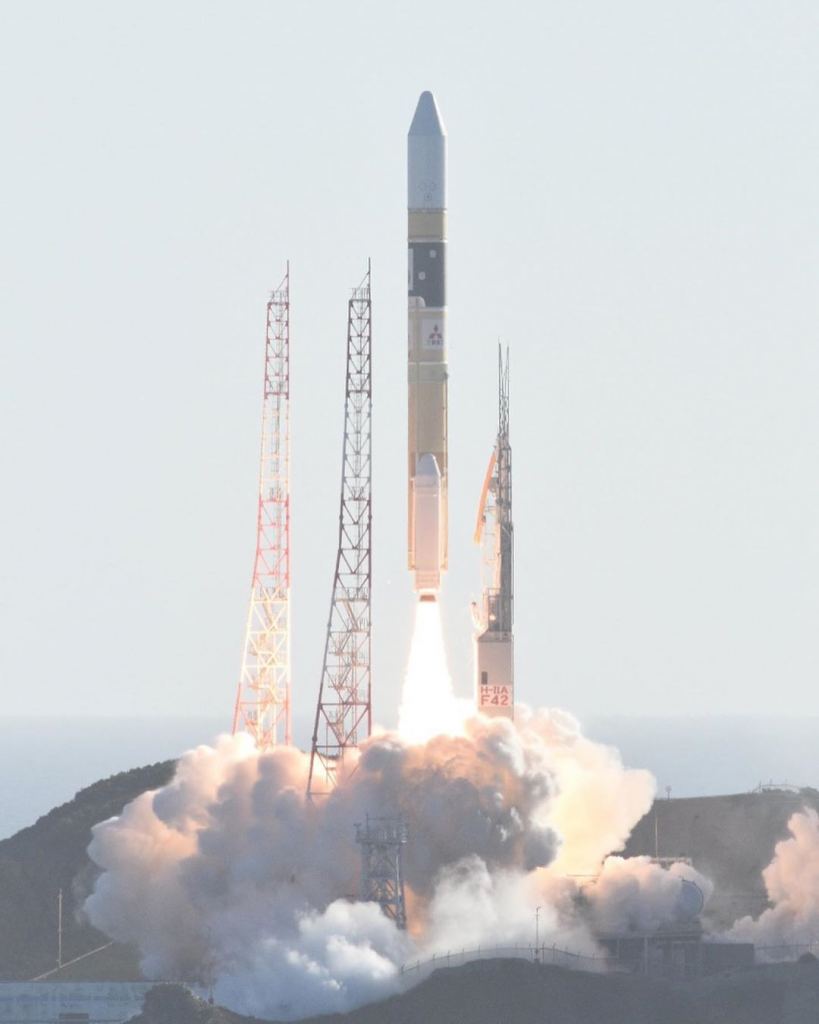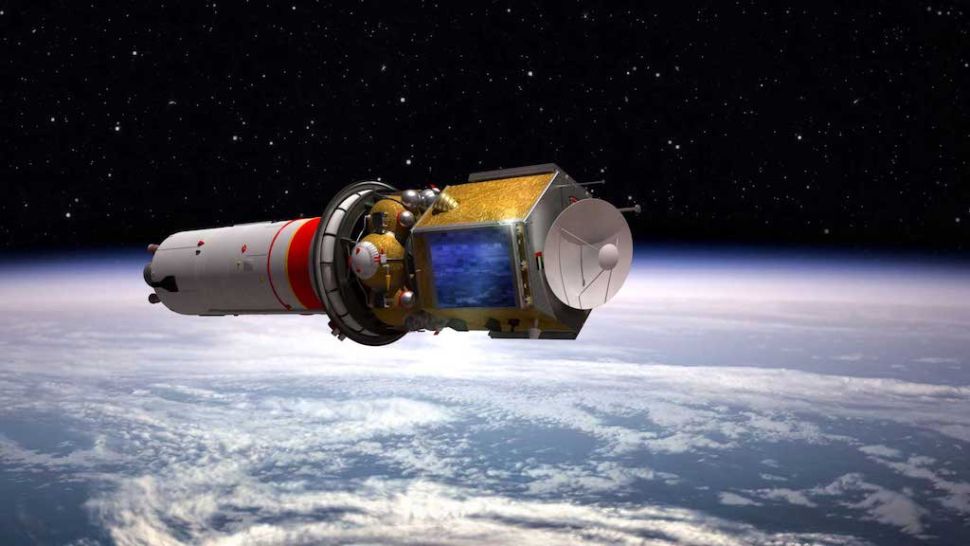On July 19th, 2020, the Emirates Mars Mission (EMM) – aka. Al Amal (“Hope” in Arabic) – launched from the Tanegashima Space Center in Japan on its way to Mars. This mission, the first interplanetary effort to be mounted by an Arab nation, is being carried out by the Mohammed bin Rashid Space Centre (MBRSC) in the United Arab Emirates (UAE) in collaboration with a number of research institutions internationally.
When Hope reaches Mars tomorrow (Feb. 9th, 2021), it will spend the next two years gathering vital science data on Mars’ atmosphere. The arrival will be broadcast by the EMM website beginning at 07:00 A.M. Mars Standard Time (MST), or 09:00 A.M. EST (06:00 A.M. PST). At 8:41 A.M. MST (10:41 A.M. EST; 07:41 A.M. PST), Hope will conduct an insertion maneuver that will place it in orbit around Mars.

The Mars Orbit Insertion phase will consist of the Hope Probe’s thrusters burning through nearly half of its fuel to slow it down to the point where it will be captured by Mars. The burn will last for roughly 27 minutes and will reduce the probe from its travel velocity of more than 121,000 km/h (75,000 mph) to approximately 17,700 km/h (11,000 mph). A pre-burn instrument check will be carried out to ensure the probe is ready for this crucial phase.
As Omran Sharaf, the EMM Mission Lead, shared in a Northern Arizona University (NAU) press release:
“The launch of Mars Hope comes at the end of a six-year journey of development by the team at the Mohammed bin Rashid Space Centre working together with our knowledge partners, an accelerated time frame by interplanetary mission standards. The mission has truly transformed The Emirates’ capability in space systems engineering, science and research and had enormous positive impacts on our science community in general.”
The orbiter carries three interferometers, like the Emirates Mars Infrared Spectrometer (EMIRS) developed in partnership with the School of Earth and Space Exploration at Arizona State University (ASU) and NAU’s Department of Astronomy and Planetary Science. This instrument will be responsible for investigating the distribution of dust, ice clouds, and ozone in Mars’ lower and middle atmosphere.

It will also track the movement of water vapor and heat through the atmosphere, providing scientists with a unique view of the Martian atmosphere and the dynamics that drive it. Said Philip Christensen, the Regents Professor and a planetary scientist at ASU:
“Working with the UAE scientists and engineers on their first planetary space mission has been a remarkable new experience for us. They have brought a great deal of excitement and enthusiasm to the project and have been a real pleasure to work with. The EMIRS instrument will provide a completely new view of the Mars atmosphere, and we are all looking forward to new discoveries and a better understanding of the climate of Mars that Hope will give us.”
In addition to EMIRS, Hope will also rely on the Emirates eXploration Imager (EXI) and the Emirates Mars Ultraviolet Spectrometer (EMUS), both of which were developed at the Laboratory for Atmospheric and Space Physics (LASP) at CU Boulder. The EXI camera will assist EMIRS by taking high-resolution images of Mars’ atmosphere and measure properties of water, ice, dust, aerosols, and ozone in Mars’ atmosphere.
Meanwhile, the EMUS spectrometer will measure global characteristics and variability in the thermosphere and hydrogen and oxygen coronae. As Christopher Edwards, an NAU assistant professor and planetary scientist, explained:
“After traveling millions of miles from Earth to Mars over the past seven months, the Emirates Mars Mission is about to embark on the next chapter of its mission and its ultimate purpose. I’m happy to say after verifying the instrument’s performance during the cruise to Mars, EMIRS is ready to make the measurements the team has worked towards for the past five years.”

The ultimate goal of the Hope mission is to provide an unprecedented global view of the Martian atmosphere and learn more about its dynamic nature. As previous missions have shown, Mars has had a turbulent history and is still a very active world, with multiple forces regularly changing its landscape. By taking a global view, scientists stand to learn more about the connections within and between the upper and lower atmospheres.
This will shed additional light on atmospheric escape, a major factor in Mars’ climatic and geological evolution. Billions of years ago, Mars had a denser atmosphere and was able to maintain temperatures warm enough to support liquid water on its surface. However, the slow loss of its atmosphere to space caused it to transition from a warmer, wetter planet to the extremely arid and cold world it is today.
Thanks to the Hope mission’s unique orbit, the orbiter will be able to provide a near-complete level of daily and geographic coverage, essentially tracking Mars’ atmosphere in the same way that weather-satellites operate in orbit around Earth. This will enable greatly improved weather forecasting, which will be of vital importance when it comes time to send human missions to Mars.
The data collected by Hope will also give scientists greater insight into how Earth may have evolved over time, which is key to understanding how terrestrial (rocky) planets can sustain a stable climate and support life. This will allow for more detailed climate models that will be used to characterize exoplanets in the future (in the hopes of finding habitable worlds beyond the Solar System.)

All of these goals are consistent with the Mars Exploration Program Analysis Group, an interdisciplinary community chartered by NASA HQ to assist in the planning of Mars exploration. They will complement and augment research conducted by NASA’s Mars Global Survey (MGS), Mars Reconnaissance Orbiter (MRO), and MAVEN missions; the ESA’s Mars Express, and ExoMars orbiter; and India’s Mangalyaan (MOM) mission.
According to Sheikh Mohammed bin Rashid Al Maktoum (ruler of the Emirate of Dubai and for whom the MBRSC is named), the mission’s name was chosen to send a message of hope and optimism to millions of young Arabs looking to make valuable contributions to space exploration and the STEAM fields (that’s right, it’s Science, Technology, Engineering, Astronomy, and Math now!)
In addition to the live coverage provided on the UAE Space Agency‘s website, the mission will also be live-tweeted via the Hope Mars Mission Twitter page. Be sure to watch as this historic mission unfolds and another nation joins the Mars exploration club!
Further Reading: Emirates Mars Mission, NAU

